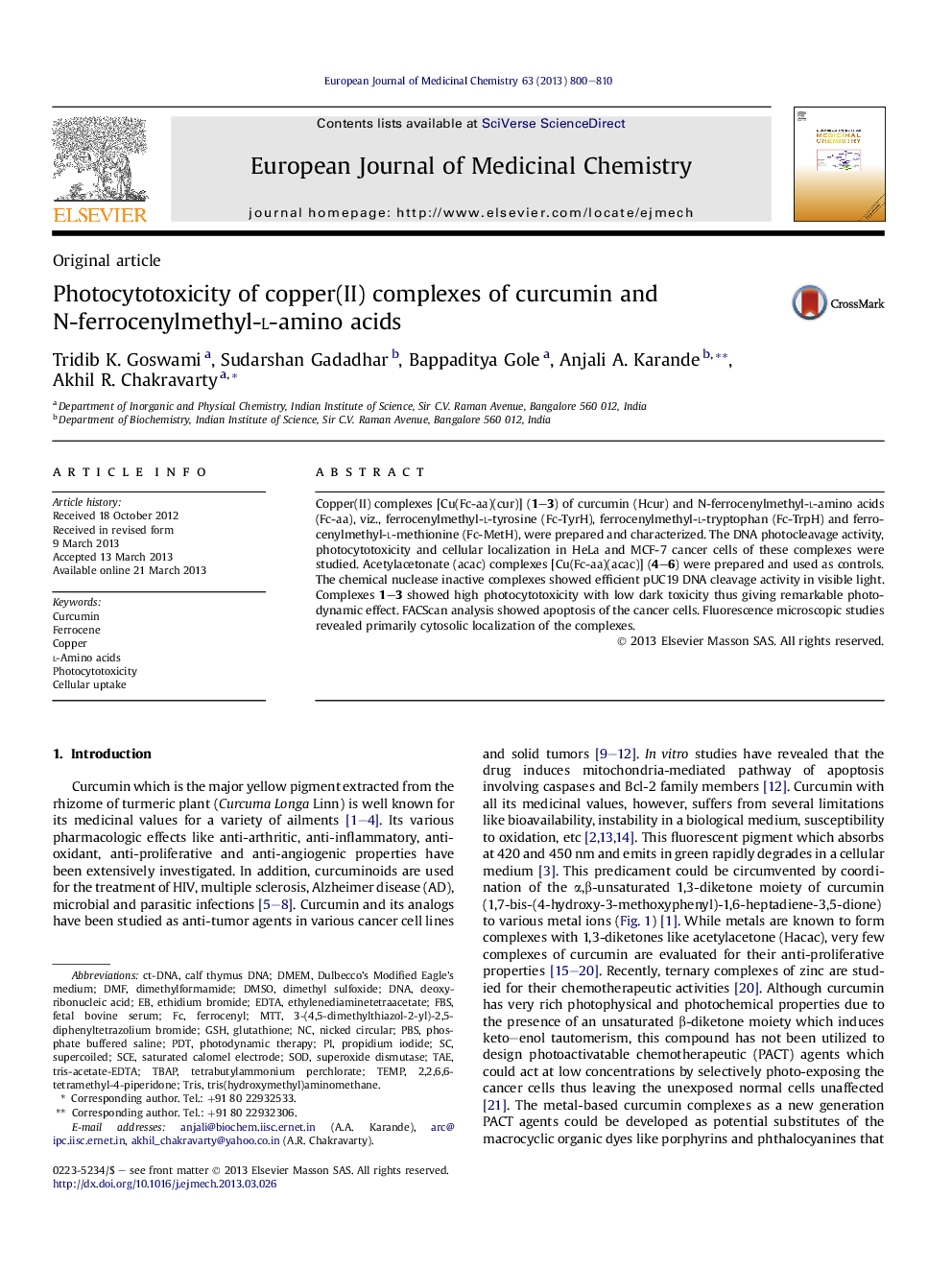| Article ID | Journal | Published Year | Pages | File Type |
|---|---|---|---|---|
| 1399228 | European Journal of Medicinal Chemistry | 2013 | 11 Pages |
•The curcumin copper(II) ferrocene conjugates efficiently photocleave DNA.•The curcumin metal-conjugates exhibit remarkable PDT effect in visible light.•FACScan study of the curcumin complexes shows apoptotic cell death in light.•Fluorescence microscopy shows cytosolic localization of 1–3 in HeLa cells.
Copper(II) complexes [Cu(Fc-aa)(cur)] (1–3) of curcumin (Hcur) and N-ferrocenylmethyl-l-amino acids (Fc-aa), viz., ferrocenylmethyl-l-tyrosine (Fc-TyrH), ferrocenylmethyl-l-tryptophan (Fc-TrpH) and ferrocenylmethyl-l-methionine (Fc-MetH), were prepared and characterized. The DNA photocleavage activity, photocytotoxicity and cellular localization in HeLa and MCF-7 cancer cells of these complexes were studied. Acetylacetonate (acac) complexes [Cu(Fc-aa)(acac)] (4–6) were prepared and used as controls. The chemical nuclease inactive complexes showed efficient pUC19 DNA cleavage activity in visible light. Complexes 1–3 showed high photocytotoxicity with low dark toxicity thus giving remarkable photodynamic effect. FACScan analysis showed apoptosis of the cancer cells. Fluorescence microscopic studies revealed primarily cytosolic localization of the complexes.
Graphical abstractFerrocene-appended l-amino acid reduced Schiff base copper(II) complexes of curcumin showed remarkable PDT effect in HeLa and MCF-7 cells with significant cytosolic localization within the cancer cells.Figure optionsDownload full-size imageDownload as PowerPoint slide
